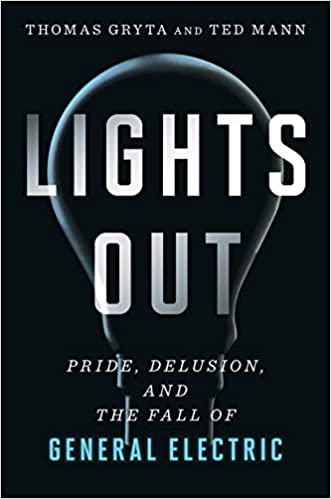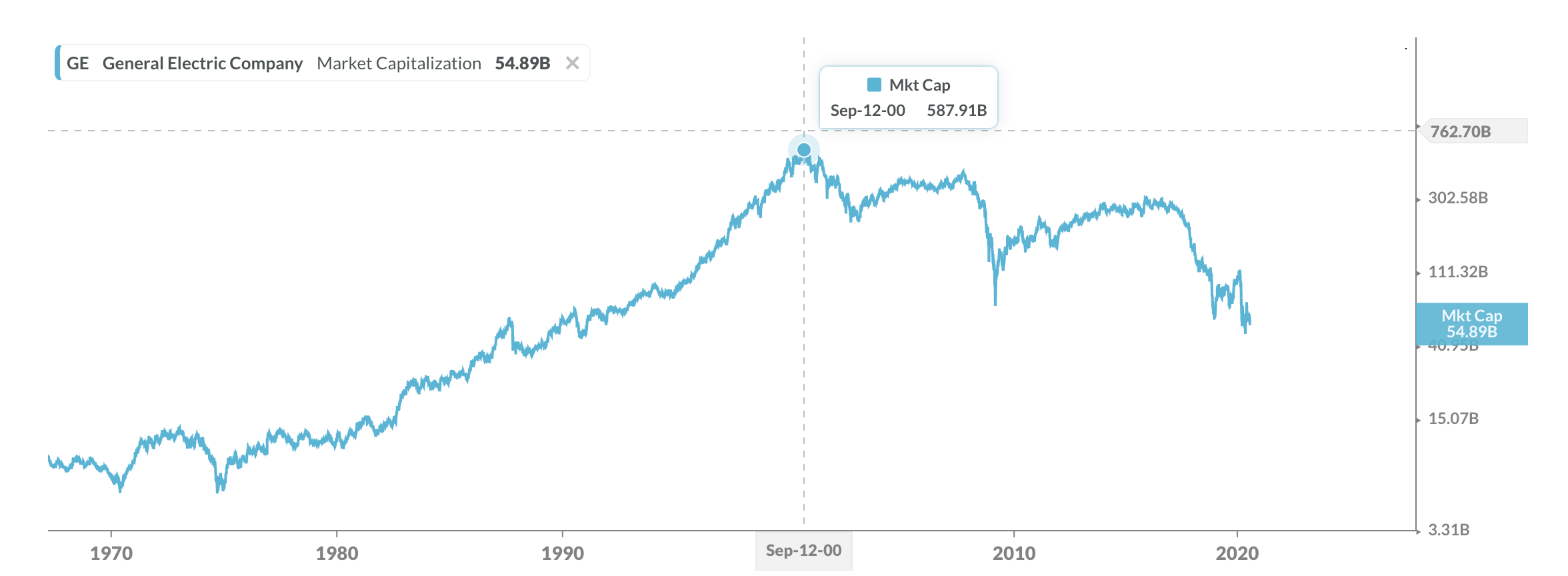You have /5 articles left.
Sign up for a free account or log in.
 Lights Out: Pride, Delusion, and the Fall of General Electric by Thomas Gryta and Ted Mann
Lights Out: Pride, Delusion, and the Fall of General Electric by Thomas Gryta and Ted Mann
Published in July 2020
There is this belief in higher ed that not much will ever change when it comes to status and rankings and influence.
This belief is wrong.
How could it be that history is not a predictor of future performance when it comes to higher ed? To answer this question, we must look outside academia.
As good a place to start as any is the story of General Electric.
Lights Out details how GE went from one of the most valuable, respected and admired companies on the planet to that of a middle-tier player. To get a sense of just how rapid GE's decline has been, check out this graphic that charts the precipitous drop of the company's market capitalization from its height in 2000 (~$587 billion) to today (~$55 billion).

Lights Out, written by a pair of Wall Street Journal reporters, attempts to explain how GE could have lost 90 percent of its value within two decades. While the book does not try to draw broader lessons around organizational decline (a missed opportunity), I think we can apply some of GE's lessons to higher ed.
In Lights Out's telling, GE's fall is mostly attributable to the errors of its leadership team and its board. The individual who gets most of the blame for GE's decline is its CEO from 2001 to 2017, Jeff Immelt.
The authors of Lights Out conclude that Immelt erred by focusing on trying to increase the stock price (through stock buybacks and continued dividends), by making bad strategic bets (such as in the oil and gas services business), and by overpaying for big acquisitions (such as Alstom for $13.7 billion). The book is also highly critical of GE's digital efforts, particularly its failure to build the industrial internet platform known as Predix.
I find the efforts to assign individual culpability to GE's travails to be mostly unconvincing. From what I can see, Immelt and his leadership team made some good decisions (such as shedding GE Capital and attempting to focus on building an industrial internet) and some bad choices (particularly all those stock buybacks).
If Predix had taken off, or if GE had timed the energy markets better, then journalists and investors may have been praising rather than condemning Immelt.
So what lessons might we learn from GE and Lights Out for higher education?
First, we should not rule out the possibility that any college or university in the top 25 today of ranking and status could, two decades hence, find itself in a similar position to GE. We should be able to imagine a college or university slipping out of the elite ranks and into the middle of the pack.
The second lesson I take from GE and Lights Out is about managing toward a number instead of leading around strengths. GE was laser-focused on its stock price. Eventually, these actions caused the stock price to tank. Colleges and universities can get overfocused on U.S. News and other rankings. This focus can cause schools to decide to move up the rankings in the short run, but which may hurt them severely in the long run.
One example of a misplaced focus on metrics is selectivity. While US News has dropped data for admissions rates in its ranking formula, the factors included are proxies for selectivity. A school that admitted many more students would see its rankings drop. As scarcity drives value, the scarcer admissions spots are for a school, the more elite a school will feel.
Is scarcity, however, a reasonable (or even defensible) metric for higher education success? Elite colleges and universities can lead the development of low-cost, high-quality online degree programs at scale. How many schools at the top of the reputation ranking are forgoing this opportunity out of a mostly unarticulated (often actively denied) belief in the importance of scarcity when it comes to reputation?
Higher education will not figure out its future by only thinking about higher education. We need to look outside academia, and where possible, use these examples to think about our possible higher ed futures.
What are you reading?








